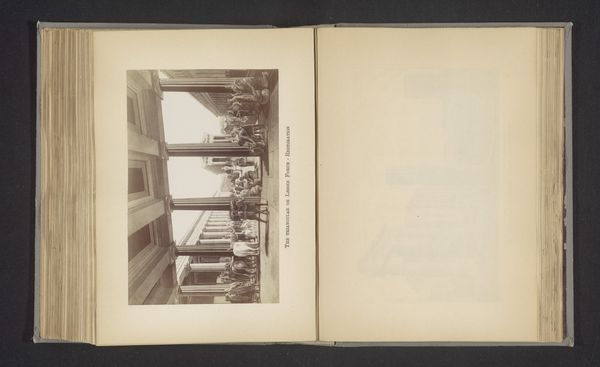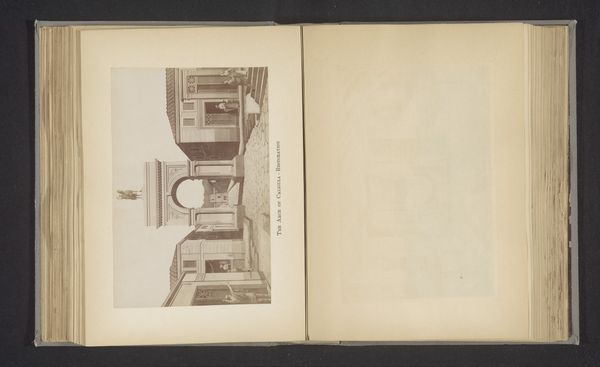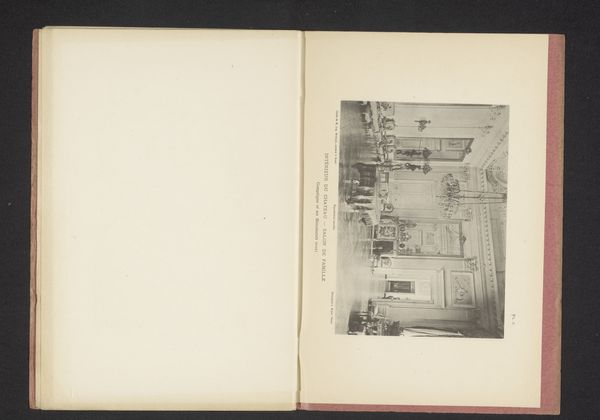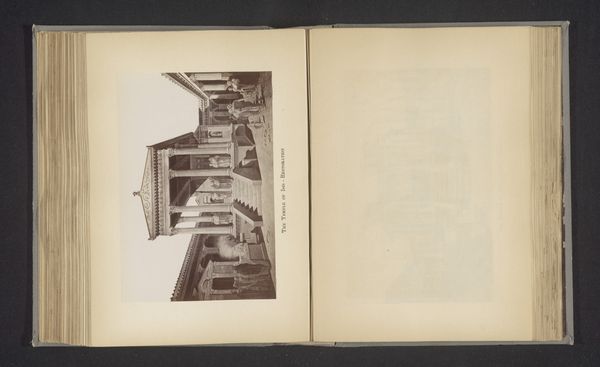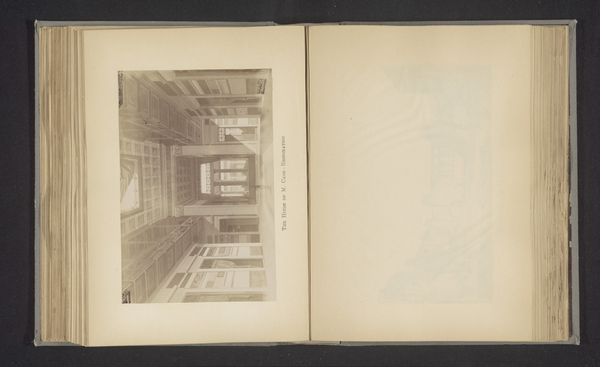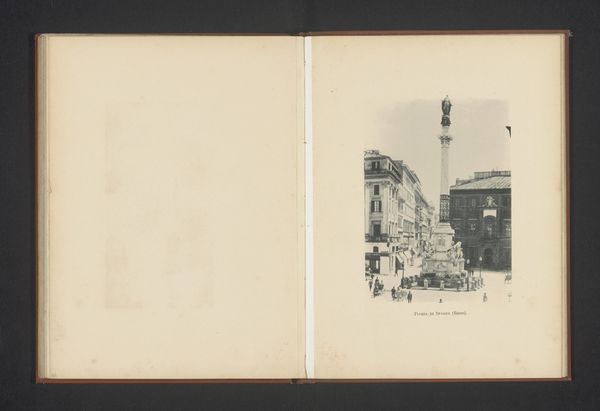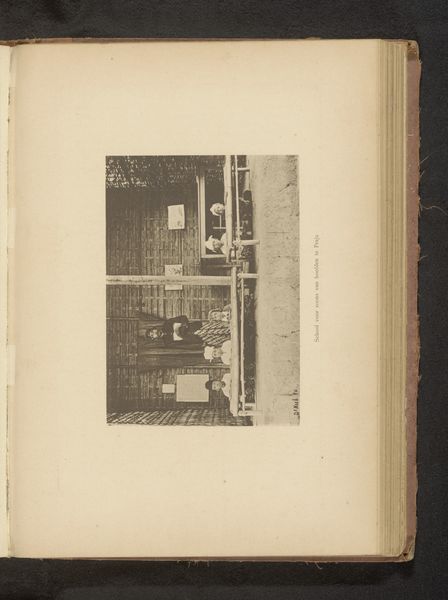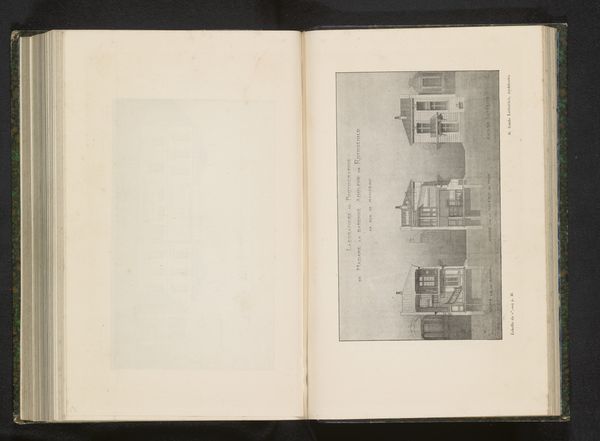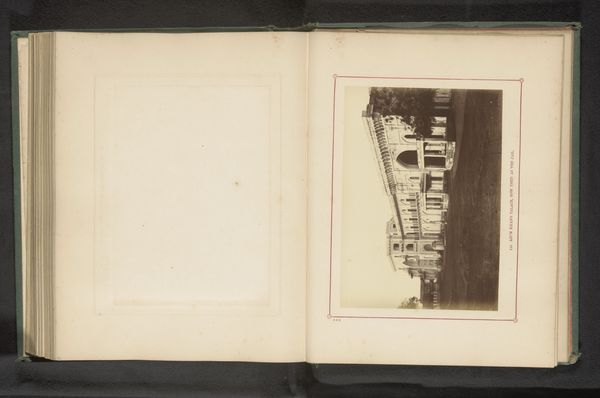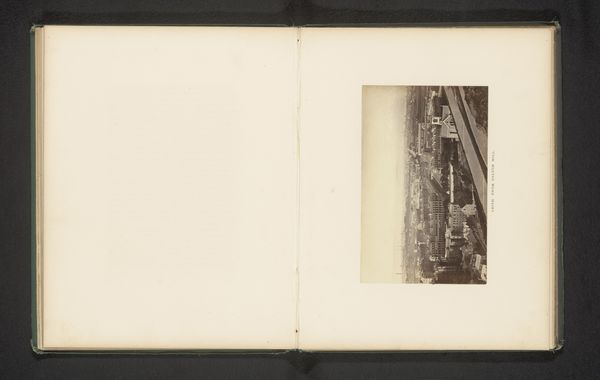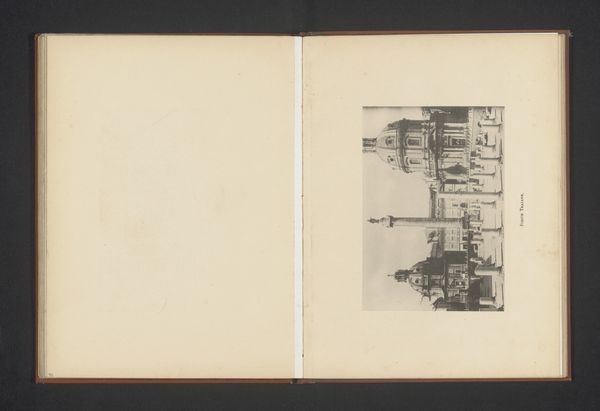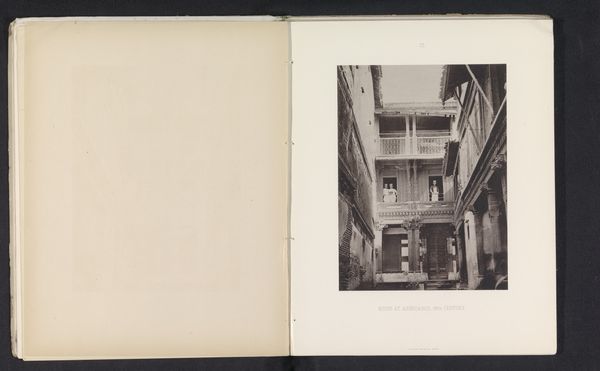
print, photography, albumen-print
# print
#
landscape
#
photography
#
ancient-mediterranean
#
albumen-print
Dimensions: height 117 mm, width 182 mm
Copyright: Rijks Museum: Open Domain
Curator: Before us, we have a page from an album containing a photogravure titled "Fotoreproductie van een gezicht op het driehoekig Forum," dating to before 1895. It's an albumen print capturing an architectural scene. Editor: My first impression is how...orderly it seems. Rigid even. The sharp angles and repeating shapes project an aura of severe control, wouldn't you say? Curator: Indeed. These sorts of prints often functioned as records. We can examine this particular image as a study in Roman urban planning, disseminated as a way of reinforcing dominant ideologies and historical narratives, during that time. Editor: It feels sanitized, though. I am conscious that the angle minimizes anything human, any real trace of lived experience, creating a hyper-controlled vision of an ancient space. What does that omission mean? Who does it serve? Curator: That is quite insightful, that connects to larger arguments surrounding archaeological documentation, even as it reveals assumptions embedded in historical interpretation. We have to consider the role of photography in constructing perceptions of ancient civilizations. It served a didactic function; prints like this would have been shown in classrooms or to promote specific values. Editor: Which is why the question of accessibility is key. Who had access to these images, and whose version of history was amplified? Consider how notions of citizenship and belonging are affected by presenting these forums, in the way our album page does, as timeless monuments, detached from their political, economic, and social contradictions? Curator: Right. Photography has that inherent power to influence. The selection of subject matter, the camera angle, everything contributes to framing how people view this historical setting and, as such, informs broader attitudes to urban planning, political spaces and cultural heritage, especially that is consumed across contexts and time. Editor: Precisely. By exploring this photo, we can explore the dynamic interplay between visual culture, societal values, and the politics of preservation that shape our understanding of shared spaces across diverse identities. What lessons can we draw in facing urgent challenges? Curator: It has been quite enlightening to observe the forum again from a perspective that acknowledges the impact of image production, and that offers a greater engagement with its cultural relevance across different audiences. Editor: Absolutely, an invitation to reassess who and what the narratives behind these images seek to privilege.
Comments
No comments
Be the first to comment and join the conversation on the ultimate creative platform.
